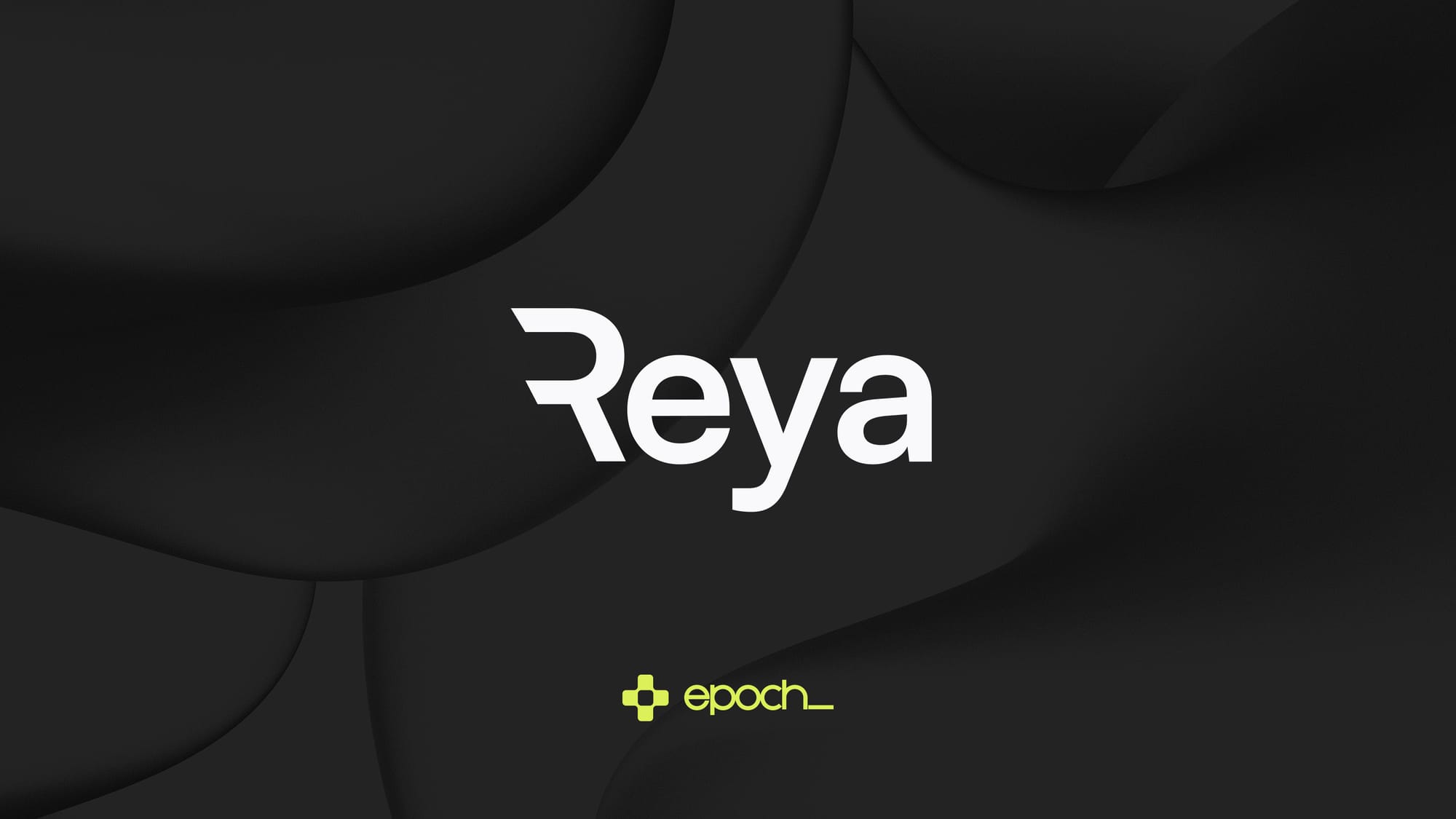The Liquidity Alchemist: Reya

In the bowels of DeFi's architecture, where smart contracts whisper to each other in bytecode and liquidity flows like digital plasma, Reya Network has discovered something that shouldn't exist: a perpetual motion machine for capital.
What you're about to read isn't another perp DEX comparison or a recitation of features you already understand. This is the story of how a team of mathematical heretics decided to change the perspective on the fundamental laws of DeFi economics. They built infrastructure that makes liquidity a property of existence rather than possession, transformed market making from business model to physics equation, and created a system that grows stronger by consuming risk.
Pour your coffee black. This one requires your full attention.
Fractional Collateralization
Let me tell you about the impossible thing Reya has built. Every DeFi protocol since the genesis block has accepted a fundamental truth: one dollar of liquidity requires one dollar of capital. It's the conservation law of decentralized finance. Maker requires 150% collateralization. Aave demands overcollateralization. Even the cowboys at Hyperliquid respect this boundary.
Reya’s answer: what if we didn't?
Through an elegant mathematical sleight of hand called the IMR multiple (λ). Reya’s passive perp pool ties capital to initial margin rather than full notional. In other words, LP capital consumption scales with IMR × λ, enabling less than 100% collateral per unit of exposure while preserving solvency. Not through reckless leverage or hidden risk, but through a fundamental reimagining of how risk propagates through a system; strict margining and a liquidation waterfall.
The impossible becomes possible through a cascade of mathematical safeguards:
- The Pool: As the pool accumulates directional exposure (net long or short), the funding rate automatically adjusts to incentivize traders to take the opposite side. More imbalance = higher funding costs = natural correction force.
- Liquidation Style: When liquidations occur, the pool absorbs positions not at market price but it waits and only takes the position at a price that actually helps its existing book.
- The Cross-Margining: The margin engine evaluates all positions holistically, calculating correlations and offsets in real-time. It's like having all your trades count as one smart strategy instead of separate plays.
It's not leverage. It's liquidity alchemy. The transformation of capital constraints into mathematical constraints.
A Living Market Maker
Forget everything you know about AMMs. Forget Uniswap's elegant x*y=k. Forget Curve's stable swap invariant. Reya has birthed something unprecedented: a constant-product pegged mechanism that thinks.
Traditional AMMs follow their formulas blindly. Input price and get output quantity. Reya's mechanism exhibits what can only be described as market consciousness. Reya’s mechanism takes multiple real-time inputs:
· External market prices (from oracles)
· Current liquidity levels in the pool
· Historical profit/loss of the pool
· Current imbalance (long vs short)
Then simultaneously outputs:
· Your execution price (incorporating all factors)
· The new funding rate (to rebalance the pool)
The mechanism's state evolution follows:
P(t) = P_index * (1 + φ(L, I))
F(t) = F_base * ψ(I, V, T)
Where:
- φ is the liquidity-aware price deviation function
- ψ is the dynamic funding rate response
- L is total liquidity, I is imbalance, V is volume, T is time
But here's where it gets metaphysically interesting: the mechanism wants to return to balance. Not through external incentives or governance decisions, but through its mathematical DNA. Imbalances create their own correction forces, higher funding rates attract arbitrageurs, price deviations invite market makers, liquidity changes adjust spreads.
It's a market maker that exists purely in mathematics, yet trades more intelligently than most humans.
The Network Layer Revelation
Every perpetual DEX faces the same brutal reality on day one: zero liquidity. Hyperliquid spent years and millions in incentives building their book. dYdX literally abandoned Ethereum for Cosmos to solve this problem. Jupiter chose to aggregate existing liquidity rather than create it. Each accepted the same painful truth: bootstrapping liquidity is crypto's hardest problem.
Reya solved it by asking a different question entirely: What if exchanges didn't need their own liquidity?
Here's the traditional model everyone accepts:
· Build exchange → Attract market makers → Incentivize LPs → Hope liquidity stays
Reya's model:
· Build exchange → Liquidity already exists
The how is architectural. Reya moved liquidity from the application layer to the network layer. The blockchain doesn't host DEXs that have liquidity, the blockchain is a liquidity network that hosts DEXs.
Competition between DEXs on Reya actually increases total liquidity rather than fragmenting it. Each new exchange brings new order flow, which makes market making more profitable, which attracts more liquidity, which benefits all exchanges.
It's positive-sum rather than zero-sum. The pie grows instead of being divided.
This isn't Protocol-Owned Liquidity where a protocol controls treasury funds. This is Network-Embodied Liquidity; where liquidity is as fundamental to the network as consensus itself.
The Portfolio Consciousness Engine
When one looks at Reya's margin system it might be accidentally sentient.
Traditional cross-margin is mechanical are simple. Sum positions, calculate risk, determine margin. Reya's unified margin account operates across multiple exchanges simultaneously, creating what can only be described as portfolio consciousness.
A trader's positions on DEX 1 know about their positions on DEX 2 and DEX 3. Not through message passing or oracle updates, but through instantaneous state awareness at the clearing layer. Your long ETH on exchange A hedges your short BTC on exchange B in real-time, without your intervention, without even your awareness.
The system evaluates:
- Correlation matrices across all positions
- Tail risk considering black swan events
- Liquidation cascades across connected positions
- Optimal capital allocation across strategies
Then it does something remarkable: it reduces your margin requirement based on portfolio effects you didn't even know existed.
The Insurance Fund
Risk management in DeFi typically follows a linear cascade: margins → liquidation → insurance fund → socialized losses. Each step is discrete, traumatic, costly.
Reya's cascade is circular, feeding back into itself:
- Margins flow into the passive pool
- The pool profits from favorable liquidation entries
- Profits strengthen the insurance fund
- Insurance funds backstop the pool
- The strengthened pool reduces margin requirements
- Lower margins attract more volume
- Volume generates fees that flow into margins
Each layer consuming and strengthening the others. The system gets more robust as it processes more risk, rather than degrading.
Final Words
In the end, Reya asks us to imagine a world where every financial transaction occurs within an infinite ocean of liquidity, where market making is a law of nature rather than a business model, where the infrastructure for exchange is as fundamental and invisible as TCP/IP.
The $30.78 million currently locked in Reya isn't capital. It's a seed crystal, around which an entirely new form of market might be created.
We're not watching a protocol launch. We're watching market structure evolve.
And evolution, as always, rewards those who recognize new paradigms before they become obvious.


